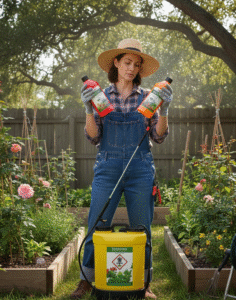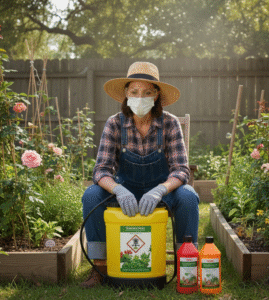If you’ve ever spent hours spraying weeds, then had to come back the next day to treat pests or diseases, you’ve probably wondered — can I mix these garden chemicals and do it all at once?
It sounds like a time-saver, but the truth is, mixing garden chemicals (also called tank mixing) can be tricky. Some combinations work perfectly, while others may reduce effectiveness, cause plant damage, or even create toxic mixtures. Understanding how and when to mix garden chemicals safely will save you time, money, and headaches while keeping your plants healthy and thriving.
What Is Tank Mixing?
Can You Mix Different Garden Chemicals Together?
What Happens If You Mix the Wrong Chemicals?
How to Check If Chemicals Are Compatible
Best Practices for Safe Tank Mixing
When You Should Avoid Mixing Chemicals
Final Thoughts and Safe Gardening Reminders
Where to Buy Quality Garden Chemicals on the Gold Coast
Tank mixing is when you combine two or more garden chemicals, such as herbicides, insecticides, or fertilisers, in the same spray tank to apply them together.
This method is often used by gardeners and landscapers to:
Save time and reduce labour.
Cover multiple problems in one go (e.g. weeds and pests).
Minimise water and application costs.
However, not all chemicals are designed to work together, and that’s where problems can arise.

In short: Yes, but only if they’re compatible.
Some garden chemicals can safely be mixed, while others will react negatively when combined. Compatibility depends on the chemical’s formulation, pH level, and how it interacts with other ingredients.
As a general rule, always check the label and manufacturer’s recommendations before mixing. Many chemical labels clearly state whether the product can be tank-mixed with others.
Mixing incompatible products can lead to several issues:
Reduced effectiveness: Chemicals can neutralise each other, meaning neither works properly.
Plant injury (phytotoxicity): Leaves may burn, discolour, or drop prematurely.
Clogged spray equipment: Some mixtures form thick sludge or crystals that block nozzles.
Environmental hazards: Unstable mixtures can drift or leach more easily, harming nearby plants or soil.
If you’re unsure, it’s always better to apply each product separately rather than risk damaging your plants or equipment.
Before you pour everything into one tank, follow these steps to test compatibility:
Read the labels carefully – Look for any warnings about mixing with other products.
Do a jar test – Combine small amounts of each product in a glass jar filled with water. Wait 15–30 minutes. If you see clumping, separation, or heat, they’re incompatible.
Check pH requirements – Some products only work within specific pH levels. Mixing chemicals can change water pH, affecting performance.
Consult the manufacturer or supplier – They can advise which products can be mixed safely.

If the chemicals are compatible, follow these best practices:
Mix in the correct order: Add products one by one in this sequence: wettable powders, water-dispersible granules, flowables, emulsifiable concentrates, and then solutions.
Use clean water – Contaminants in dirty water can cause unwanted reactions.
Keep stirring – Agitate the mixture continuously to prevent settling.
Apply promptly – Don’t let mixed solutions sit for hours before use.
Wear protective gear – Gloves, masks, and goggles should always be worn when handling chemicals.
Avoid tank mixing if:
You don’t have label confirmation or compatibility data.
The mixture includes oily emulsions or strong alkaline products, which often react poorly with other formulations.
You’re treating sensitive plants like seedlings or ornamentals.
The weather is hot, dry, or windy, as this increases the risk of damage or drift.
If in doubt, use each product separately to ensure safe and effective results.
Tank mixing can be a time-efficient way to care for your garden, but only when done correctly. Always start small, follow the label directions, and never assume two products will work together just because they’re both “garden-safe.”
A cautious approach today can prevent costly mistakes and keep your garden thriving year-round.
If you’re from the Gold Coast and looking for reliable, high-quality garden chemicals and products, visit Garden Nursery Products. We stock a wide range of herbicides, fungicides, insecticides, and fertilisers suited for Australian gardens. Visit us in-store or shop online.
Added to cart
Check out our shop to see what's available